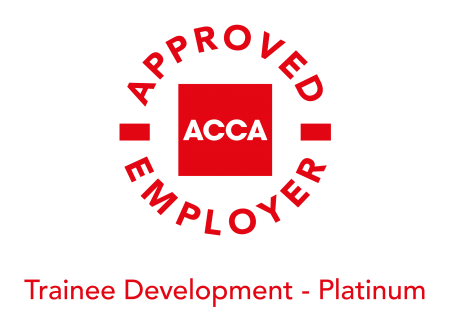A Guide to R&D Tax Credits
Research and development (R&D) reliefs for UK companies are government incentives for scientific and technological innovation. Reliefs were originally introduced in 2000 for SMEs, and extended to larger companies two years later. The government’s schemes have been refined and developed in subsequent years, and have provided significant help to forward-thinking businesses operating in many sectors throughout the UK.
For SMEs, the R&D tax relief scheme is available for qualifying activities. Larger companies can access Research and Development Expenditure Credit (RDEC), and under certain circumstances SMEs are also able to so, in addition to R&D tax relief.
What is an SME for R&D tax relief purposes?
For R&D tax relief purposes, SMEs must employ fewer than 500 staff. They must also have a turnover of less than €100m or a balance sheet total under €86m. Annually, over 75,000 SMEs claim a total of more than £4 billion in relief (see Research and Development Tax Statistics from gov.uk.)
What restrictions apply to R&D tax relief?
SMEs have to fulfil other conditions in order to claim the relief. They must not be receiving state aid, or be working as a subcontractor to another business.
Other considerations include whether or not your company has external investors, and whether your company has connected, or partner companies. If your company has more than 50% of the voting rights in another company, or vice-versa, it is considered to be a connected company. If you have over 25% of the voting rights or capital of another company, or vice-versa, you have a partner company. Having connected or partner companies may restrict your access to SME relief.
Research and Development Expenditure Credit for larger companies
Larger companies can claim Research and Development Expenditure Credit (RDEC) for R&D projects. RDEC can also be claimed by SMEs and large companies which carry out work as a subcontractor for R&D work by a large company. Every year, over 4,000 larger companies claim a total of more than £2.5 billion of RDEC, with over 5,000 SMEs claiming more than £300 million of RDEC (see Research and Development Tax Statistics from gov.uk.)
What work qualifies for R&D reliefs?
Government reliefs are targeted at companies working on innovative science and technology projects which aim to develop a way forward in their sector. Work in social sciences and theory do not count, even if they are as scientifically based as psychology, economics and maths. The focus is very much on work that develops services, processes and products which can be sold and help to develop business activity. The research also needs to be relevant for your sector, not just for your own company.
Your application for tax relief or tax credit will need to cover how your project could take your sector forward, and how it dealt with uncertainties about your findings through testing and analysis. You also need to supply details of why the same answers couldn’t easily be reached an expert in your sector. In other words, it has to be based on looking for a genuine step forward. It doesn’t matter if it’s not successful – but the aim has to be forward-looking.
Which type of companies qualify for R&D reliefs?
Innovation is happening throughout the commercial world, and companies within almost all sectors are active in significant R&D expenditure.
Manufacturing companies make the highest number of R&D relief claims, and account for the highest total value of claims. The projects which drive the statistics are in research and development areas such as machine prototypes, automation, digitisation and materials.
Not far behind is the Information and Communications sector which is busily making advances in ecommerce, software, security data processing and AI among others areas. Companies in biotech and pharmaceuticals are also investing heavily in R&D, as are architecture and construction. Sectors which are not traditionally associated with R&D activity, yet which account for significant number of claims, include the legal and accounting professions, alongside advertising and marketing.
Which costs qualify for R&D reliefs?
Costs that qualify for reliefs have to be directly related to expenditure on R&D projects. Qualifying costs fall into the following categories:
- Costs for staff including salaries, employer’s NICs, pension contributions and expenses
- Consumables such as power, light and heating
- Software required for R&D
- Prototypes for testing and evaluation (but not if they are made to be sold)
- Clinical trials volunteers (for pharmaceuticals projects)
If an SME uses a subcontractor, relief can be claimed against 65% of the costs. For RDEC claims, subcontractors must be an individual, a partnership or an educational or research organisation, or a charity. If that is the case, 100% of the costs can be included. If a company undertakes R&D work for a large company, they are likely to be able to claim under the RDEC scheme.
Any expenditure which is only partially for the project can be apportioned – for example if the R&D manager spends 20% of their time on a project, that is the proportion of the remuneration costs which can be put into the claim.
Which R&D costs do not qualify for tax relief or credits?
With the focus of the government schemes firmly focussed on the R&D element of any qualifying projects, there are costs which are not allowable in any claims, including:
- Production and distribution costs
- Capital expenditure
- Land costs
- Payments for patents and trademarks, including staff costs
It is important to explore whether a Research and Development Allowance (RDA) may be available for the costs of plant, machinery and buildings used for R&D. RDAs are based on the same definition of activities as R&D tax reliefs and RDECs, and companies should plan their claims to maximise the benefits of all R&D reliefs and allowances.
How much are R&D tax reliefs for SMEs?
Under the SME scheme, companies can claim deductions against taxable profits for qualifying R&D expenditure, currently at a rate of 130% (2022/23 figure). That is on top of the 100% relief on the actual expenditure on qualifying projects, giving a total relief of 230%.
If the R&D claim results in a tax loss, the company may be able to surrender the loss for a cash repayment, currently calculated at 14.5% (2022/23 figures). If R&D expenditure is incurred before a company starts to trade, 230% of the expenditure can be filed as a loss. The pre-trading loss can also be surrendered for a cash repayment, which could provide much needed cash flow for start-ups.
How much are R&D tax credits for larger companies?
Under the RDEC scheme, tax credits are set at 13% of qualifying R&D expenditure. The credit is subject to Corporation Tax, giving a 10.5% reduction in tax liability. If a company has no Corporation Tax to pay, the benefit can be paid in cash. The same figures apply for SMEs making a claim under RDEC.
How to claim R&D tax relief
To claim R&D tax relief, details need to be supplied in a Corporation Tax return (form CT600) for the period covering the time the expenditure appears in the accounts. There is a deadline of 2 years following the end of the relevant accounting period to make any amendments to the tax return.
To calculate R&D tax relief under the SME scheme:
- Calculate costs directly attributable to R&D
- Include 65% of costs for subcontractor or external staff
- Multiply the total figure by 130%.
- Add this to the original R and D expenditure
- Enter the total figure into your tax return.
To calculate claims for RDEC for larger companies:
- Calculate costs directly attributable to R&D
- Include 65% of costs for subcontractor or external staff
- Multiply the total figure by 13%.
- Enter this figure into your tax return.
Details needed to support R&D tax relief claims
Once you have submitted your Corporation Tax return, you need to submit details of the R&D projects you are claiming for. The details need to cover:
- How each project set out to make an advance in scientific and technological knowledge and practice
- Uncertainties around the project, and how they were overcome
- Why a professional in the relevant sector would find it challenging to work out the project
- Start and end dates of the projects
Changes to R&D relief from April 2023
The Spring Budget 2021 announced reforms aimed at supporting modern research methods to further benefit innovation. From April 2023, qualifying expenditure will be expanded to cover the costs of data and cloud computing, both of which are critical factors in the R&D landscape.
How to find help for R&D tax relief claims
Successful claims require detailed preparation of your Corporation Tax return and supporting information. Companies also need to understand the range of benefits and allowances which they could qualify for, including the Research and Development Allowance and the Annual Investment Allowance.
Perrys tax experts can guide you through the issues and options which will be of most benefit to your business and maximise the reliefs, credits and allowances which you can claim.
For further information see our Factsheet on Corporate and Business Tax and Research and Development.
For expert advice on R&D tax reliefs, please contact Perrys Chartered Accountants now for a free consultation.






